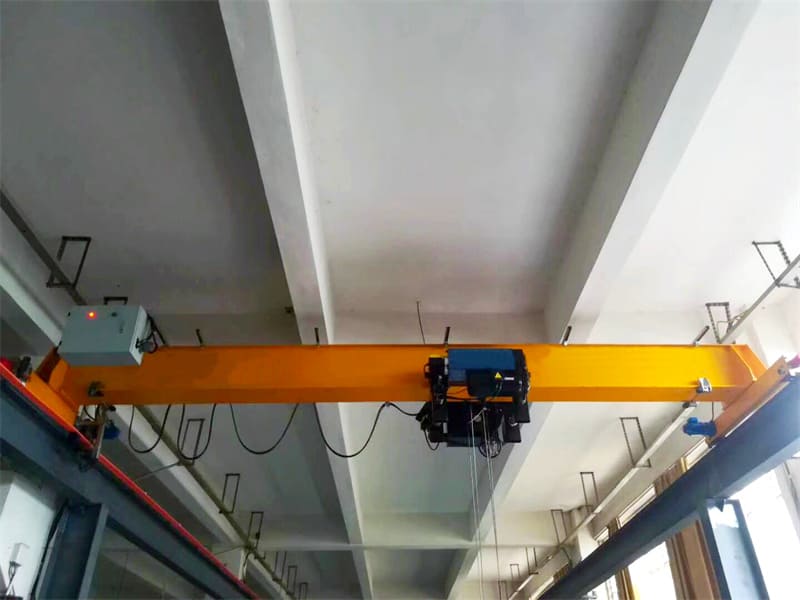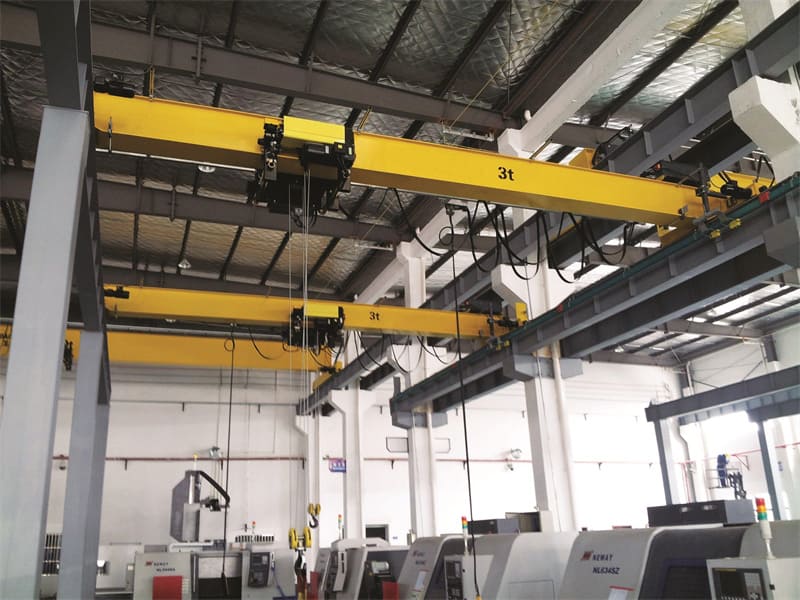One of the main advantages of top running bridge cranes is that they can be designed to handle extreme loads. As such, they are typically larger than stock cranes, so not only can they have higher rated capacities than stock cranes, but they can also accommodate wider spans between track beams due to the larger size of the structural members that make up the system.
Mounting the crane trolley on top of the bridge beams also provides benefits from a maintenance perspective, facilitating easier access and repairs. The top running single girder crane sits on top of the bridge beams, so maintenance workers can perform necessary activities on site as long as there is a walkway or other means of access to the space.
In some cases, mounting the trolley on top of the bridge beams can restrict movement throughout the space. For example, if the roof of a facility is sloped and the bridge is located near the ceiling, the distance that the top running single girder crane can reach from the intersection of the ceiling and the wall may be limited, limiting the area that the crane can cover within the overall facility space.
Top running overhead cranes run on a fixed rail mounted on top of each runway beam, which allows the end trucks to carry the girder and hoist along the top. These cranes can be set up as single or double beams, depending on the application requirements.
Some of the main advantages of top running bridge cranes include:
No restricted capacity. This allows it to handle both small and large loads.
Increased lifting height. Mounting on top of each track beam increases lifting height, which is beneficial in buildings with limited headroom.
Easy installation. Since the top running overhead crane is supported by the track beams, the hanging load factor is eliminated, making installation simple.
Less maintenance. Over time, a top running bridge crane does not require much maintenance, other than regular checks to ensure the tracks are properly aligned and if there are any issues.









